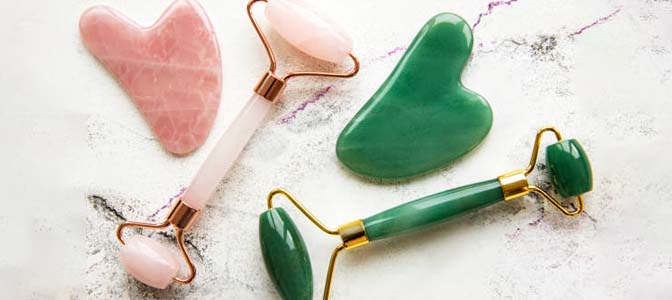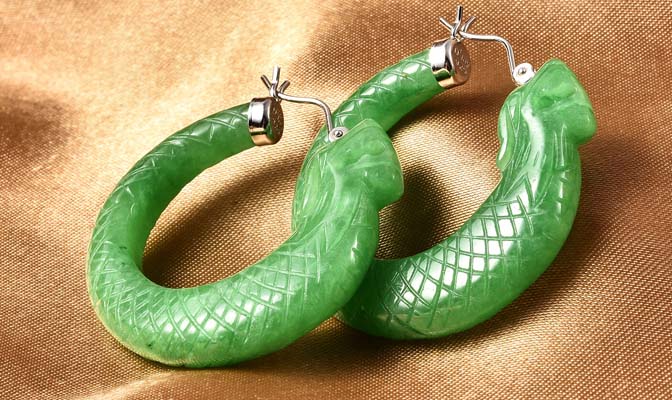China played a significant role in introducing it to the world. First-ever jadeite in China came from Burma in the late 17th century. Since the Neolithic period, Chinese were carving jade mineral into tools and other cult objects. It was during the Shang dynasty that Jade was started to use in making small ornamental plates with decorative designs of animals. The craft of jade carving in China achieved advancement during the reign of Zhou dynasty. To the Chinese, jade symbolises wisdom, purity, long life, and good health. They used to worship Jade and considered is to be a symbol signifying five virtues that are modesty, compassion, wisdom, courage, and justice.

Introduction
Name Jade comes from the Spanish term piedra de ijada. Jade is one of a kind stone that is not only popular among gemologists and jewellery lovers, but this stone is the special most stone for artists. This historical stone is believed to be a symbol of love. For over 5000 years, Jade has been used in fashioning tools, sculptures, jewellery, gemstones, and other objects. In ancient times, Jade was used to manufacture axe heads, weapons, and tools for scraping and hammering, thanks to its toughness. Chinese culture played a major role in making this stone world famous. Chinese artisans have been producing jade objects for over 5,000 years. They would use this stone as gemstones, healing stones, and talismans.
New Arrivals in jade

Origin & Supply
Most important supplier of gem-quality Jade mineral has been the city of Mogaung in northern Myanmar since ages. Nephrite is majorly mined in New Zealand, Brazil, Australia, China, Zimbabwe, Canada, Russia, Poland, Taiwan, and Alaska. The main source of jadeite is Myanmar that is also the only known source of imperial jadeite. Jadeite mineral is also found in Japan, Canada, Guatemala, Kazakhstan, Russia, Turkey, Cuba, and the USA. Best-known extraction of Jade is found in the lake dwellings of Switzerland, Western France, Central America, Mexico, and China.

Facts About Jade
- Jade is used to be the traditional gift for the twelfth wedding anniversary.
- In Chinese culture, it is considered to be more valuable than Diamond and Gold.
- It is popularly used in Feng Shui.
- To test its originality, Jade is struck with a hammer. Real jade tends to rebound the tool that hits it.
- It is listed as the mystical birthstone for March borns and the birthstone for Zodiac sign Virgo.
- Chinese often wear jade to attract their true love.

Properties of Jade
When this stone was discovered, it was assumed that all jade objects were made from the same material. But, in 1863, a French gemologist discovered that Jade material could be divided into two different minerals: Jadeite and Nephrite. Jadeite and nephrite have precisely different mineral compositions and properties. Jadeite is rich in aluminium, while nephrite is magnesium-rich. These two minerals have similar physical properties, but there are notable differences in their crystal structures, refractive index, compositions, specific gravity, and densities. The fine lustre of polished nephrite is oily rather than vitreous (glassy) lustre found in jadeite.
- Colour: Jade is available in an interesting range of colours. It is found in green, blue, white, black, orange and yellow, lavender, sometimes multi-coloured and dappled too. Coloured jade stones are rare. Colour and hue of the stone are affected by iron and manganese deposits. Forest green is the most desirable colour of jade. Most premium quality jade is almost transparent with a vibrant green tone that is known as Imperia Jade. Apart of green jade, purple and black colour jades are also valuable.
- Cut: Jade can be called as a versatile stone when it comes to cutting and shaping it. Generally, Jade is cut into cabochons and tumbled stones that can be used as beads or gemstones for jewellery. Use of jade is not only confined to jewellery, but artisans also carve jade into objects. The prominent use of Jade carving can be seen in Chinese culture and art.
- Clarity: Jade is found in opaque to translucent nature with a glassy to greasy lustre. Most celebrated quality of Jade is semitransparent that comes with a glossy brilliance and lustorus appearance. After polishing, you get a smooth and even texture. Opaque Jade with cloudy inclusions usually have a lower value.
Use of Jade in Jewellery Jade is a hard, durable, and lustrous that comes in a wide range of colours. It can be easily worked into shapes and impressive carving, making it a desirable gemstone. Since, thousands of years ago, Jade has been used to craft a variety of jewellery items like pendants, necklaces, rings, bracelets, earrings, beads, and other items.
Value of Jade
The value of jade mineral arises with its size, colour, and appearance. Due to the rarity of Jadeite, its value is usually higher than Nephrite. Large-sized Jade has a premium price if the quality is excellent. Colour is the other significant factor that affects its value. Saturation, tone, intensity, lustre, and uniformity in the stone play an important part in deciding its worth.

What to remember while buying jade?
- The first thing that you need to do before you make your jade purchase is have an extensive knowledge of different types of jade. There are different varieties, from opaque to milky, and all command a different price on them. Know the difference in value.
- Jade, being a natural stone, is smooth and cool to touch. Feel the gem in your hand before buying it, it is bound to help you see if it’s real.
- Another remarkable difference you’ll find in real and imitation jade is the weight. Imitation stones are always a lot lighter than the real stones. Just pick the stone. If it feels too light, it might be an imitation.
- Always seek certification. If you’re making a high-priced purchase for the jade gem, demand a certification of authenticity. Many small shop sellers pass off imitation jade as real stones.
- The most expensive variety of jade, in terms of colours, is imperial jade. This variety commands the highest price.
- Jade is very rarely seen in the cut and faceted form. It’s a beautiful gem that increases in value when it’s smooth and in cabochon form.
- Another way of finding if you have a real jade piece is by holding it in your fist. If the stone heats up quickly, it’s not real jade. Real gemstone takes long time to heat up, being naturally a cool gemstone.
FAQ's
What is the History of Jade?
Does Jade scratch easily?
It stands 6.5 to 7 on the Mohs scale. Jade is well resistant to scratches and abrasions. It comes with an exceptional toughness making it a durable gemstone that can be used every day. It is one of the most sturdy and hard gems around the world.
How to Clean Jade?
It is suggested to store your jade jewellery in a fabric-lined box. To clean your Jade stone with a soft brush and a soapy lukewarm solution. After brushing, rinse it in cold water and dry with a soft cloth. You must avoid ultrasonic and steam cleaners along with heat or harsh chemicals as they can damage the surface and alter the colour, lustre, and appearance of the stone.
Does Jade fade in the Sun?
As Jade undergoes various treatments, like dyeing and polishing, it is prone to get faded if it is exposed to the sun for longer hours.
What Jade variety is the most valuable?
The most expensive Jade is the Imperial Jade which is semi-transparent and has an emerald-green tinge.







































